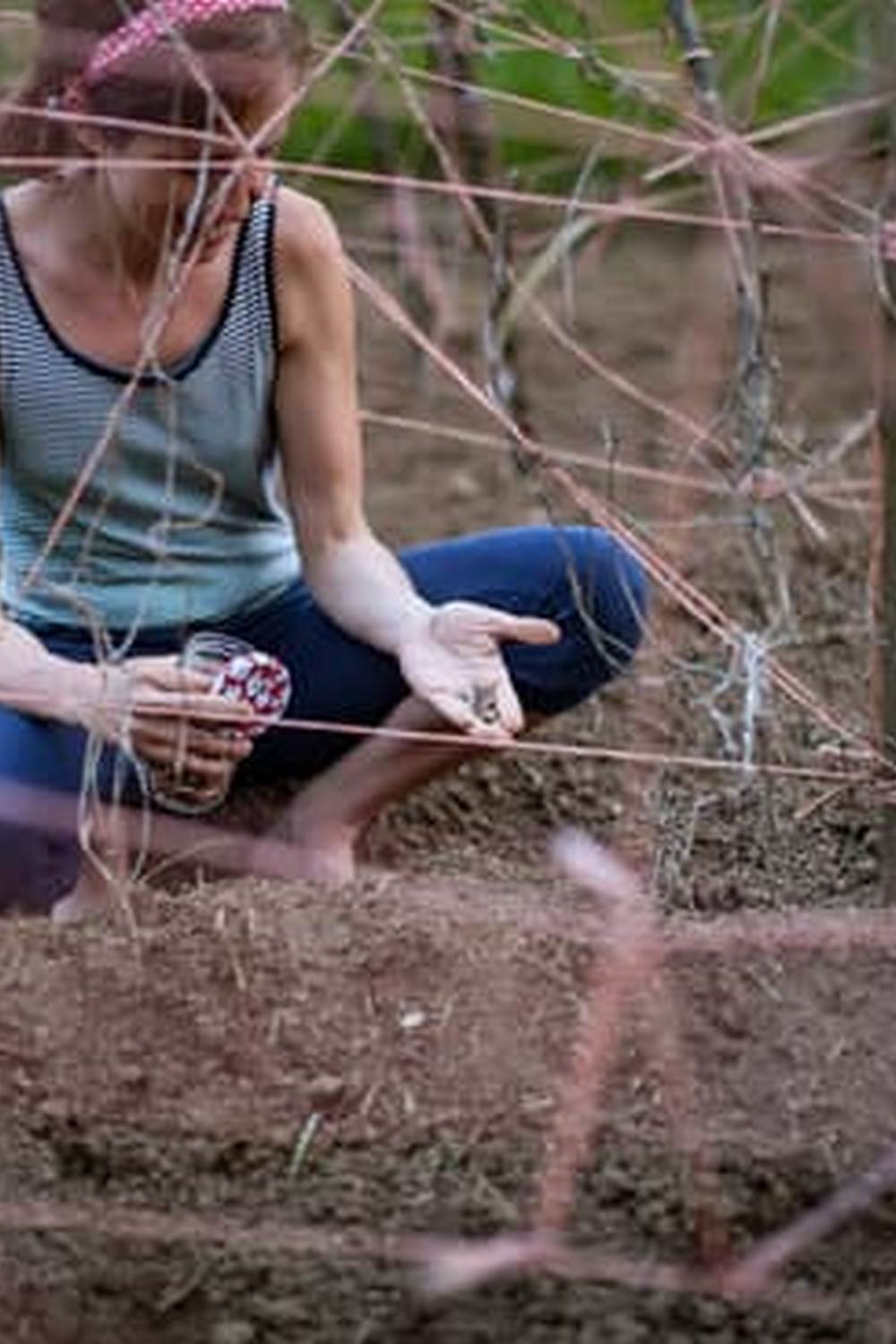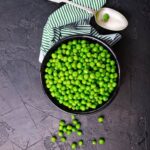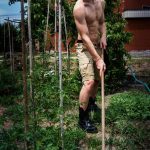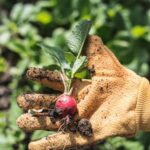Vegetable gardening containers have become a popular choice for urban and suburban gardeners looking to grow their own fresh produce in limited space. The concept of vegetable gardening in containers offers numerous benefits, including accessibility, versatility, and the ability to control soil quality and moisture levels. Whether you have a small balcony, patio, or even just a windowsill, container gardening allows you to enjoy the rewards of homegrown vegetables.
When it comes to choosing the right containers for vegetable gardening, several factors must be considered. From size and material to drainage and portability, selecting the best containers is crucial for the success of your garden. Additionally, choosing the best vegetables for container gardening is essential. Not all vegetable varieties thrive in containers, so it’s important to select ones that are well-suited for confined spaces and have minimal root systems.
Preparing the containers for planting is also an important step in successful vegetable gardening. Proper soil preparation, drainage considerations, and watering techniques can greatly impact the health and productivity of your vegetable plants. By following these essential steps, you can create an ideal environment for your container garden to flourish.
Choosing the Right Containers
When it comes to vegetable gardening containers, choosing the right containers is essential for the success of your garden. The type of container you select can have a significant impact on the growth and health of your vegetables. Here are some factors to consider when choosing the best containers for your vegetable gardening needs:
1. Size: The size of your container matters, as it directly affects the growth and yield of your vegetables. Larger containers provide more space for root development and moisture retention, while smaller containers may limit the growth of certain plants. Consider the mature size of the vegetables you plan to grow and choose a container that will accommodate their growth.
2. Material: Vegetable gardening containers come in a variety of materials, including plastic, terracotta, wood, and fabric. Each material has its own benefits and drawbacks in terms of durability, insulation, weight, and water retention. Consider these factors when selecting the material for your containers, as they can impact the overall health and growth of your vegetable plants.
3. Drainage: Proper drainage is crucial for the success of vegetable plants in containers. Without adequate drainage, soil can become waterlogged, leading to root rot and other issues. Look for containers with drainage holes or be prepared to drill them yourself if necessary.
4. Mobility: Depending on your space and gardening setup, mobility may be an important factor to consider when selecting containers for vegetable gardening. If you need to move your containers to ensure adequate sunlight or protection from harsh weather conditions, lightweight and easily movable options may be best.
By considering these factors when choosing the right containers for your vegetable garden, you can set yourself up for success in growing healthy and bountiful produce in a contained environment. Taking the time to select appropriate vegetable gardening containers will ensure optimal growing conditions for your plants and ultimately lead to a successful harvest.
Selecting the Best Vegetables for Container Gardening
When it comes to vegetable gardening containers, selecting the right vegetables is crucial for a successful harvest. Not all vegetables are suitable for container gardening, so it’s essential to choose plants that thrive in a confined space. Fortunately, there are many options to choose from, allowing you to grow a variety of tasty and nutritious crops in your containers.
Vegetables That Thrive in Containers
Some of the best vegetables for container gardening include tomatoes, peppers, lettuce, spinach, radishes, carrots, and herbs such as basil, mint, and parsley. These plants have shallow root systems or can adapt well to growing in small spaces. Additionally, compact or dwarf varieties of certain vegetables are ideal for container gardening as they require less space but still produce an abundant harvest.
Choosing the Right Vegetables for Your Space
Before selecting which vegetables to grow in your containers, consider the amount of sunlight your outdoor space receives. Most vegetables require at least 6-8 hours of direct sunlight per day, so it’s important to choose crops that will thrive in your specific lighting conditions. Additionally, consider the size of your containers and the amount of space you have available. Some climbers and sprawling plants may not be suitable if you have limited vertical or horizontal space.
Tips for Successful Vegetable Gardening Containers
To ensure successful vegetable gardening in containers, choose a variety of crops that suit your environmental factors and also complement each other. For example, plant tall crops at the back of containers and low-growing plants in front to maximize space.
Additionally, consider companion planting by mixing different types of vegetables together to naturally repel pests or enhance growth. With careful consideration and planning when selecting the right vegetables for your container garden, you can create a thriving and bountiful growing environment.
Preparing the Containers
When it comes to vegetable gardening containers, proper preparation is key to ensuring the success of your plants. The process of preparing the containers for planting involves several important considerations, including soil, drainage, and watering. Here are some tips and tricks for getting your containers ready for a successful vegetable garden:
1. Soil: One of the most crucial factors in preparing vegetable gardening containers is selecting the right soil. Opt for a high-quality potting mix that is well-draining and nutrient-rich. Avoid using regular garden soil, as it can become compacted in containers and may not provide the ideal growing environment for your vegetables.
2. Drainage: Adequate drainage is essential for the health of your container garden. Ensure that each container has sufficient drainage holes in the bottom to allow excess water to escape. You can also add a layer of small rocks or broken pottery at the bottom of the container to aid in drainage.
3. Watering Considerations: Proper watering is essential for container-grown vegetables, as they can dry out more quickly than plants grown in the ground. Consider installing a drip irrigation system or using self-watering containers to help maintain consistent moisture levels in the soil.
By taking these tips into consideration and properly preparing your vegetable gardening containers, you can create an optimal environment for your plants to thrive. With good soil, adequate drainage, and proper watering techniques, you’ll be on your way to a successful container garden filled with delicious vegetables.
Planting and Spacing
When it comes to planting vegetables in containers, proper spacing and depth are crucial for the success of your garden. In this section, we will provide a step-by-step guide on how to plant vegetables in containers, including tips on spacing, depth, and placement.
Choosing the Right Containers
Before you start planting, it’s important to choose the right containers for your vegetable gardening project. Ensure that the containers have adequate drainage holes to prevent waterlogging, which can lead to root rot. Additionally, consider the size of the containers based on the mature size of the vegetable plants you plan to grow. For example, larger plants like tomatoes and peppers will require deeper and more spacious containers compared to smaller herbs or leafy greens.
Preparing the Soil
Once you’ve selected your containers, it’s time to prepare the soil for planting. Use a high-quality potting mix that is specifically formulated for container gardening. Avoid using regular garden soil as it may not provide adequate drainage and may contain pests or diseases. Fill the containers with soil, leaving enough space at the top for watering.
Planting and Spacing
When planting in containers, it’s important to follow spacing guidelines provided on seed packets or plant tags. As a general rule of thumb, ensure that there is enough space between each plant to allow for proper growth and air circulation. Consider using a trowel or your hands to make holes in the soil according to the recommended planting depth for each vegetable. Once planted, gently firm the soil around the base of each plant and water thoroughly.
By following these guidelines for planting and spacing vegetables in containers, you can ensure that your plants have ample room to grow and thrive in their limited space. Proper preparation of both containers and soil is essential for successful vegetable gardening in containers.
Maintenance and Care
Maintaining and caring for vegetable plants in containers is crucial to ensure a successful harvest. One of the most important aspects of caring for vegetable gardening containers is watering. Containers tend to dry out faster than traditional garden beds, so it’s essential to check the moisture level regularly and water as needed. It’s also important to provide proper drainage in the containers to prevent waterlogged soil, which can lead to root rot and other issues.
In addition to watering, fertilizing your vegetable plants is vital for their overall health and productivity. Since container soil tends to lose nutrients faster than ground soil, it’s important to provide a regular feeding schedule for your vegetables. Using a balanced fertilizer or compost will help replenish the nutrients that may be depleted over time.
Pest control is another critical aspect of maintaining vegetable plants in containers. Pests such as aphids, caterpillars, and mites can wreak havoc on your plants if left unchecked. Implementing natural pest control methods such as neem oil spray, companion planting with pest-repelling herbs, or introducing beneficial insects can help keep pests at bay without the use of harmful chemicals.
Properly caring for vegetable plants in containers will ensure healthy, thriving plants that will provide a bountiful harvest throughout the growing season.
| Aspect | Consideration |
|---|---|
| Watering | Regularly check moisture levels and provide proper drainage |
| Fertilizing | Use balanced fertilizer or compost to replenish nutrients |
| Pest Control | Implement natural methods such as neem oil spray or companion planting |
Harvesting and Ongoing Success
Growing vegetables in containers can be a rewarding and convenient way to enjoy fresh produce, even in small spaces. When it comes to harvesting your vegetables from containers, there are several tips and best practices to keep in mind to ensure ongoing success with your container garden.
Firstly, timing is crucial when it comes to harvesting vegetables grown in containers. Each type of vegetable has its own specific harvest time, so it’s important to familiarize yourself with the growth habits of the plants you have chosen. For example, tomatoes should be harvested when they are firm and fully colored, while leafy greens like lettuce can be harvested young for a milder flavor.
Another important consideration for ongoing success with your vegetable gardening containers is proper care after harvesting. It’s important to continue providing adequate water and nutrients to your plants even after you’ve harvested vegetables. Regular feeding with a balanced fertilizer can help replenish the nutrients in the soil that the plants have used up during their growth.
In addition to general maintenance, it’s also essential to watch out for pests and diseases that can affect your container-grown vegetables. Regular inspection of your plants for any signs of infestation or disease can help you catch issues early on and take appropriate measures to prevent them from spreading.
| Harvesting Tips | Ongoing Success Tips |
|---|---|
| Timing is crucial – understand the harvest time for each vegetable | Continue providing water and nutrients after harvesting |
| Harvest regularly to encourage more production | Regular feeding with a balanced fertilizer |
| Proper handling of harvested vegetables to maximize shelf life | Inspect plants for pests and diseases regularly. |
Container Gardening Inspiration
In conclusion, vegetable gardening in containers is a versatile and rewarding way to grow your own produce, even if you have limited space. By choosing the right containers, selecting the best vegetables for container gardening, and following the steps for preparation, planting, and maintenance, you can enjoy a successful container garden. Additionally, there are many creative and practical ideas for vegetable gardening containers to inspire your own unique container garden.
Whether you are interested in vertical gardening to maximize space, companion planting to improve plant health, or engaging in DIY projects to repurpose containers for gardening, there are endless possibilities for creating a beautiful and productive vegetable garden. The key is to experiment with different techniques and find what works best for your specific space and needs.
Overall, container gardening can provide ongoing success as long as you continue to care for your plants properly. With regular watering, fertilizing, pest control, and timely harvesting, you can enjoy a bountiful harvest of fresh vegetables. So whether you’re new to vegetable gardening or looking for innovative ways to expand your garden, don’t be afraid to think outside the box (or container) and get creative with your own vegetable gardening containers.
Frequently Asked Questions
What Is the Best Container to Grow Vegetables In?
The best container to grow vegetables in is typically a large, durable pot or planter with good drainage. This allows for proper root development, moisture control, and space for the vegetables to grow.
What Do You Put in the Bottom of a Vegetable Container?
In the bottom of a vegetable container, it’s important to place a layer of small rocks or pebbles to promote drainage and prevent waterlogged soil. This helps to keep the roots healthy and prevents water from stagnating.
Which Pots Are Best for Vegetables?
When choosing pots for growing vegetables, it’s best to opt for large, deep pots that provide ample room for root growth. Terra cotta pots are popular due to their breathability, while plastic pots are lightweight and retain moisture well. Ultimately, the best pot depends on the specific needs of the vegetables being grown.

If you’re looking to get into vegetable gardening, or are just looking for some tips on how to make your current garden better, then you’ve come to the right place! My name is Ethel and I have been gardening for years. In this blog, I’m going to share with you some of my best tips on how to create a successful vegetable garden.





